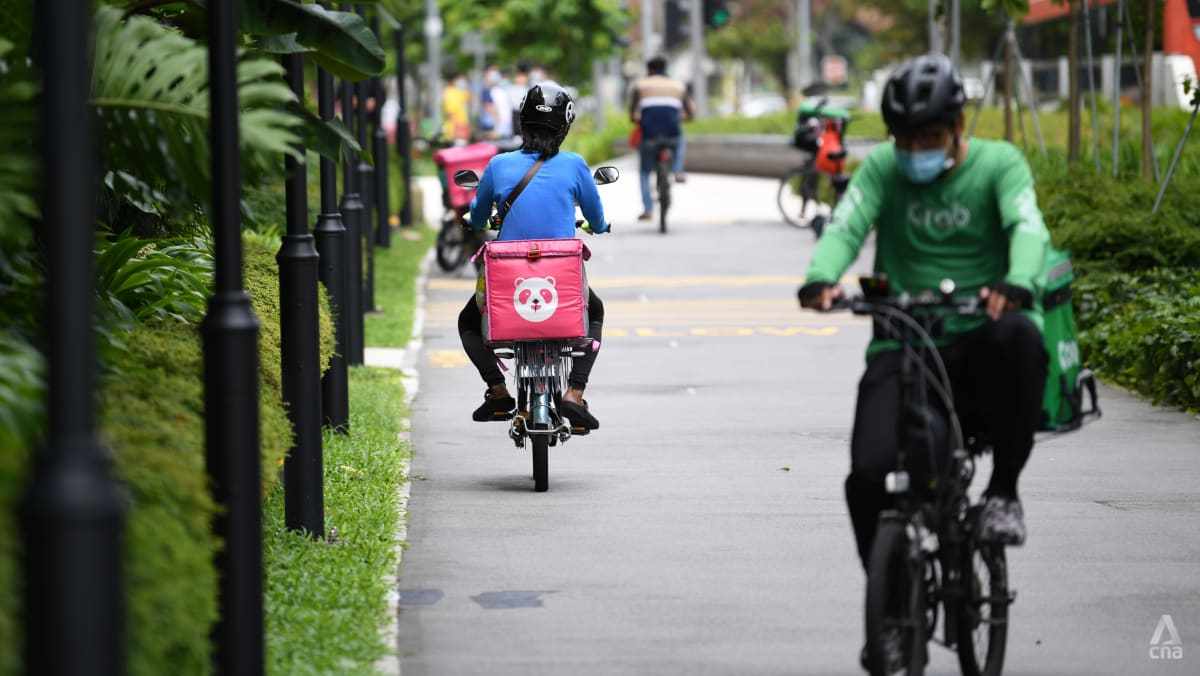
SALARIES AND WOES
According to IPS, 23.6 per cent of riders earn less than S$1,000 a month from food delivery work, 33.9 per cent earn between S$1,000 and S$1,999, 13 per cent earn between S$2,000 and $2,999, and 29.5 per cent earn S$3,000 and above.
Only 3.2 per cent of riders make at least S$5,000 a month.
Respondents were also asked about the number of hours they worked in a day to achieve their highest monthly earnings.
Riders who earned less than S$5,000 for their highest monthly earning typically worked between 8 and 12 hours, while the majority of riders who earned S$5,000 and above worked 10 to 12 hours.
About one in 10 riders were able to earn at least S$5,000 in a month in the last one year.
The report noted that there was a perception among delivery riders that those with higher education were able to employ strategies that allow them to maximise their earnings.
Asked about these strategies, Research Associate Thian Wen Li said they involved finding the right spots to go to at the right time.
“There’s no concrete evidence where some of the strategies work or not. But it’s just that when we follow riders who earn a little bit more, we realise that there’s some kind of consistency in the way they behave, compared to riders who earn significantly less,” Ms Thian said.
Dr Mathews added: “It’s strategy, that constant thinking about – whether it’s correct or wrong – there’s an attempt to try to find a particular way to be able to get more earnings. So if they notice that they’re not getting enough calls, enough orders, they will do something to be able to accelerate that, find something, so they just don’t take it lying down.”
Currently, platforms incentivise riders to work at peak hours and locations where there is an expected demand. Riders who strategise with these in mind may also be able to maximise their hours-to-income payoff, said the study.
The foremost worry among riders, however, was the sustainability of their income given the rising number of riders in the industry.
Around 68 per cent of respondents feared not being able to earn enough with the increased competition.
Describing what the work was like, one 26-year-old rider was quoted as saying in the report: “At night from the ground, like a bunch of wolves trying to get pieces of meat on the ground. Like hawker throw food on the floor, and like birds go fight. That’s how competitive it is.”
About 67.1 per cent of respondents worried about the rising cost of living, while 64.8 per cent feared that they would no longer earn enough due to platform companies reducing financial incentives.
Noting that the riders agreed that the fares were not as good as before, Ms Thian said: “No longer (do) you have 2017, 2016 days where you can earn high amounts.
“So even with the fluctuation overall there is a trend in the wages dropping. And that’s why it’s a concern if people rely on food delivery as the only form of income.”
